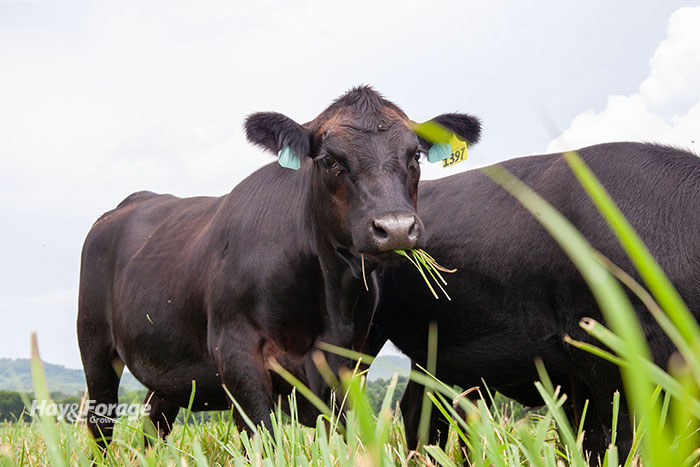Finish summer grazing strong |
| By Amber Friedrichsen, Associate Editor |
|
|
 As we enter the second half of summer, relief may be on the way for cool-season forages as temperatures start to favor plant growth again in some regions. Even with cooler weather in the extended forecast, though, there is still plenty of time to prioritize proper summer grazing management. In a recent article from the University of Maryland Extension’s Maryland Milk Moos newsletter, Amada Grev offers livestock producers tips for grazing livestock during this time of year. The forage and pasture specialist explains the best ways to maximize pasture productivity while minimizing the adverse effects hot and dry weather can have on forage growth. Leave enough leaf area. The optimum stubble height for most cool-season grasses is 3 to 4 inches. Not only does leaving this amount of plant residual after grazing keep the soil surface shaded and limit soil moisture loss, but it also helps forage capture sunlight for photosynthesis and subsequent regrowth. “Think of your pasture as a solar panel where green, growing leaves are energy producers,” Grev writes. “To maximize production, livestock need to be rotated off of a pasture in a timely fashion to ensure an effective solar panel, or leaf area, is left in the paddock following grazing.” While grazing height impacts aboveground forage growth, it affects root growth as well. Energy that is produced in plant leaves during photosynthesis is translocated belowground to strengthen root systems. In fact, Grev notes the amount of live growth occurring aboveground is roughly equivalent to the amount of live growth occurring belowground. With that said, overgrazing forage can negatively affect root systems. “Up to 50% of the plant can be removed with little to no impact on root growth. With greater than 50% removal, root growth slows dramatically, and removing 70% or more of the aboveground forage mass stops root growth completely,” Grev states. “This is where the old rule of thumb ‘take half, leave half,’ comes into play,” she adds. When this rule is not followed, more energy is used to facilitate leaf regrowth and less is translocated to roots. Over time, root health will start to decline, along with long-term pasture productivity. Extend rest periods. In addition to avoiding overgrazing, giving pastures enough rest between grazing events will also safeguard aboveground and belowground biomass. “If the plant is given rest following grazing, new leaves will develop and will replenish its energy supply,” Grev explains. “Without rest, the plant is not able to replenish its energy supply and will continue to use the remainder of its stored energy to produce new leaves.” The duration of pasture recovery depends on forage species, stocking density, and current weather conditions. For example, rest periods must be longer in the summer when it is hotter and drier than the spring, and therefore, grazing rotations will be slower. “When pastures are growing fast, rotate fast; when pastures are growing slow, rotate slow,” Grev suggests. “Remember, that the goal of the rest is to allow young green leaves to maximize photosynthesis.” Regardless of growth rate, wait until forage reaches optimal grazing height before allowing livestock to graze it again. This is typically 8 to 10 inches for most cool-season grasses. Clip pastures. A final tip for summer grazing management is to clip seedheads from forage to deter reproductive growth. Doing so will encourage more vegetative growth and improve overall forage quality and quantity. Grev notes clipping pastures can also eliminate weed seedheads and serve as a form of weed control. The presence of seedheads can indicate uneven grazing patterns, which may impair stand longevity in the long run. If this is the case, consider creating smaller paddocks to intensify stocking density and reduce animals’ ability to selectively graze forage. Doing so can enhance pasture utilization and combat the need to clip pastures in the future. “While we can’t control how hot or dry summer will get, we can strategically manage the grass we have to help keep summer paddocks productive and growing,” Grev asserts |
